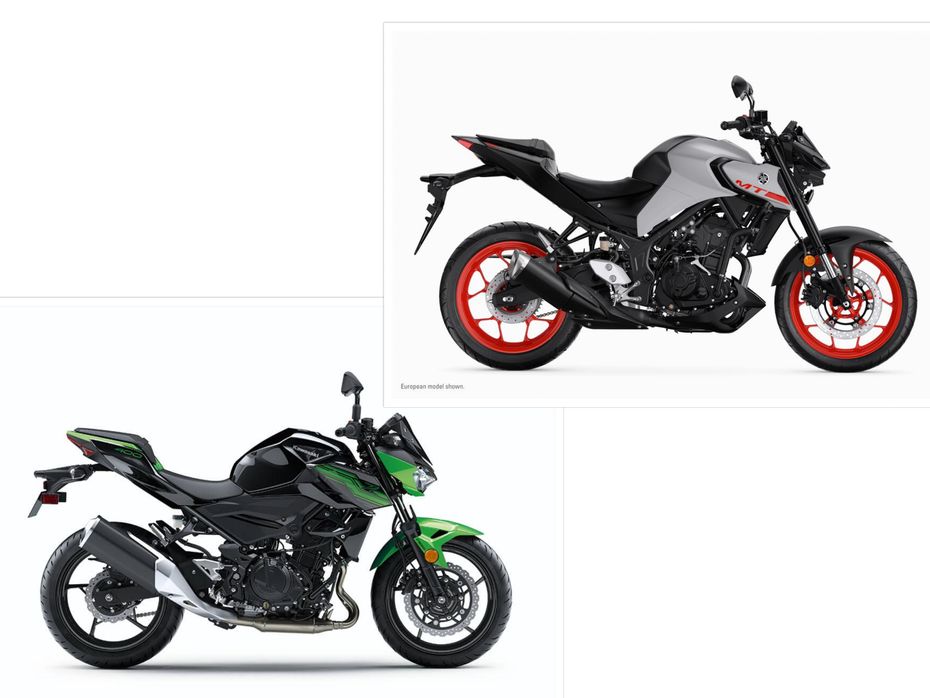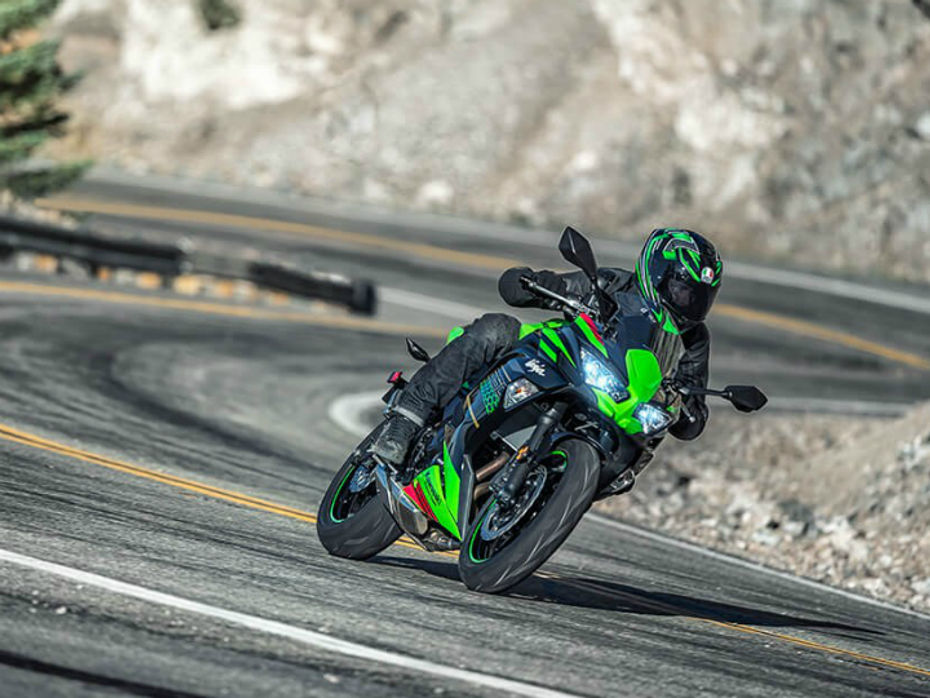
Yamaha MT-03: Old vs New - What's Different?
- Oct 4, 2019
- Views : 42093


One claims to embody the dark side of Japan while the other unabashedly wears its shouty green paint scheme. How deep do the differences run between these two? Let’s find out by pitting the new Yamaha MT-03 against the Kawasaki Z400 in a spec comparison.
Engine
|
Yamaha MT-03 |
Kawasaki Z400 |
|
|
Engine |
Parallel-twin 321cc liquid-cooled DOHC four stroke |
Parallel-twin 399cc liquid-cooled DOHC four stroke |
|
Power |
42PS @ 10,750rpm |
49PS @ 10,000rpm |
|
Torque |
29.6Nm @ 9000rpm |
38Nm @ 8000rpm |
|
Gearbox |
6-speed |
6-speed |
While both motorcycles employ parallel-twin motors, the Kawasaki has a significant displacement advantage with its engine measuring 399cc compared to the Yamaha’s 321cc. We don’t yet have output figures for the MT-03, but we expect them to be the same as that of the current YZF-R3 from which its engine is borrowed. That means 42PS and 29.6Nm Now, the Euro-spec Z400 is limited to 45PS in order to conform to A2 licensing requirements, but if this bike comes to India, we will receive the Japan-spec version that puts out 49PS and 38Nm.
This is significantly more than the Yamaha, and it should reflect in standing start and in-gear acceleration times, as we saw when we compared the R3 to the Ninja 400. What further hammers the nail into the Yamaha’s coffin is the fact that the green bike also produces its peak figures at slightly lower revs. That said, when it comes to highway cruising both motorcycles are equally relaxed and stress-free up to about 120kmph by virtue of their smooth twin-cylinder motors. Beyond this point, the Z400 flexes its muscles and ekes out an advantage thanks to its larger engine.

Dimensions
|
Yamaha MT-03 (expected figures) |
Kawasaki Z400 |
|
|
Length x Width x Height |
2090 x 754 x 1069mm |
1989 x 800 x 1054mm |
|
Wheelbase |
1379mm |
1369mm |
|
Rake/Trail |
25 degrees/94mm |
24.5 degrees/91mm |
|
Seat Height |
780mm |
785mm |
|
Ground Clearance |
160mm |
145mm |
|
Fuel Tank Capacity |
14 litres |
14 litres |
|
Curb Weight |
169kg |
165kgs |
Despite having a larger engine and packing in more equipment, the Kawasaki is actually marginally lighter than the Yamaha. Sharper geometry combined with a shorter wheelbase on the Kawasaki should make it the more agile motorcycle of the two, and the greater overall width could also mean wider bars and more leverage. These two factors put together give the Z400 a dynamic advantage, at least on paper. The one area where the Kawasaki does seem to fall short, quite literally, is ground clearance. At just 145mm off the ground, the Z400 will face a struggle if and when it ever comes face-to-face with our speed breakers and potholes. With equal fuel tank sizes and what we think will be comparable fuel efficiency figures, both motorcycles should have similar ranges.

Components
|
Yamaha MT-03 |
Kawasaki Z400 |
|
|
Chassis |
Diamond-type frame |
Steel trellis frame |
|
Front Suspension |
37mm KYB upside-down fork, 130mm travel |
Conventional telescopic fork, 119mm travel |
|
Rear Suspension |
7-step preload adjustable monoshock, 124mm travel |
Preload-adjustable Uni-Trak monoshock, 130mm travel |
|
Front Brakes |
298mm disc, ABS |
310mm petal-disc, ABS |
|
Rear Brakes |
220mm disc, ABS |
220mm disc, ABS |
|
Front Tyre |
110/70-R17 |
110/70-R17 |
|
Rear Tyre |
140/70-R17 |
150/60-R17 |
While the Z400 had a clear advantage in terms of suspension over the older MT, the new 37mm USD fork from KYB is claimed to be a significant improvement. We expect the ride quality to be fairly equal between the Z400 and the new MT-03 as well. While the 298mm front disc on the MT isn’t inadequate by any means, the Z400 just takes things a step further with its 310mm petal disc, and is likely to be the better stopper in this company if they are anything like their supersport counterparts.
While the Kwacker’s 150-section rear tyre might appear like an advantage on paper, the truth is that a 140-section rear tyre gives you a more rounded profile and quicker steering. This should be partially offset by the Z400’s sharper geometry, but we can only be sure once we get our hands on both motorcycles.

The Verdict
On paper, then, the Kawasaki seems to stand a little taller than the Yamaha. However, we must keep in mind that if both these bikes make their way to our shores, the MT will be significantly cheaper than the Z400, to the tune of Rs 50,000 - Rs 70,000. The Yamaha is expected to arrive next year in the range of Rs 3.3 lakh - Rs 3.5 lakh. Going by Kawasaki’s track record in India and the pricing of the Ninja 400, we predict the Z400 to set you back by around Rs 4 lakh, and while the Kawi might be the better equipped bike of the two, it certainly isn’t enough to justify that sort of price gap.

Yamaha MT-03: Old vs New - What's Different?

2020 Yamaha MT-03: Image Gallery

Yamaha India, Can We Please Get This Version Of The MT-03?

Yamaha R3 vs KTM RC 390 vs Aprilia RS 457 vs Kawasaki Ninja 400:...

Royal Enfield Himalayan 450 vs Triumph Scrambler 400 X vs KTM 390...

Honda CB300R vs TVS Apache RTR 310: Specs Compared

Triumph Scrambler 400 X vs Yezdi Scrambler vs Royal Enfield Scram...

3 Of India’s Best Small Capacity Retro-roadsters Compared

3 Retro Roadsters Battle It Out!

Kawasaki Eliminator 400 vs Honda Rebel 500: Specifications Comparison
India's largest automotive community